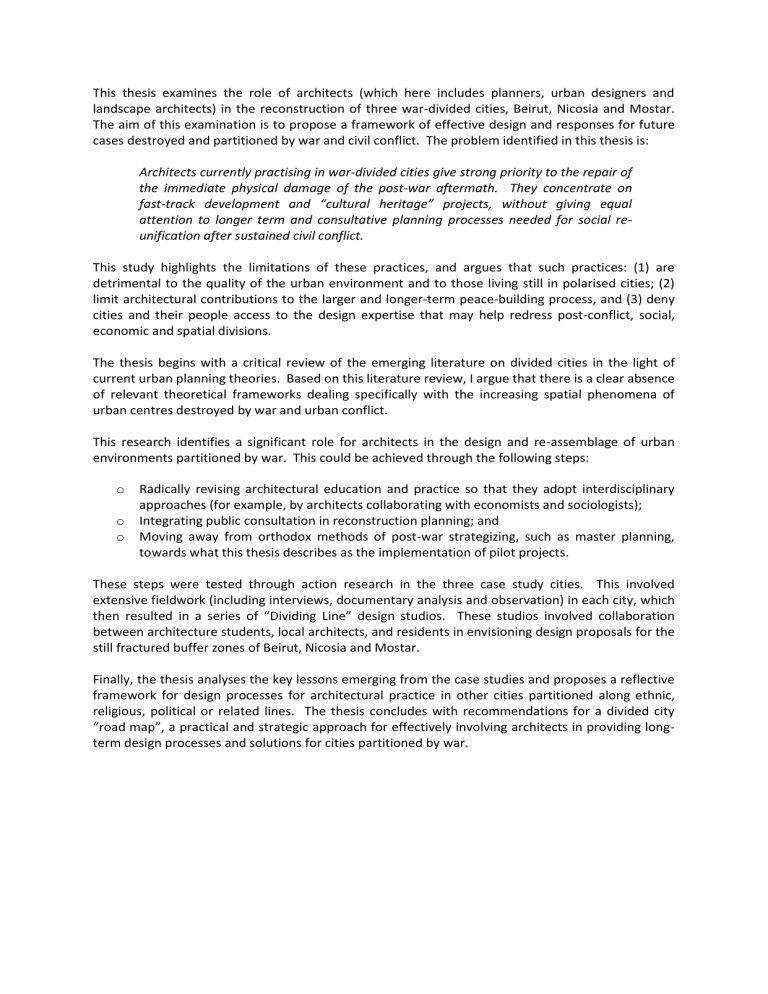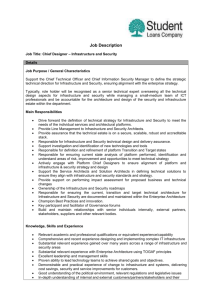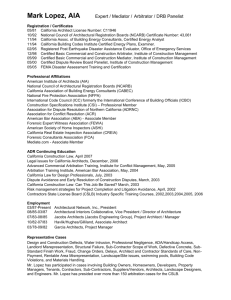Abstract Dr Esther Charlesworth 2003 (MS Word , 13kb)

This thesis examines the role of architects (which here includes planners, urban designers and landscape architects) in the reconstruction of three war-divided cities, Beirut, Nicosia and Mostar.
The aim of this examination is to propose a framework of effective design and responses for future cases destroyed and partitioned by war and civil conflict. The problem identified in this thesis is:
Architects currently practising in war-divided cities give strong priority to the repair of the immediate physical damage of the post-war aftermath. They concentrate on fast-track development and “cultural heritage” projects, without giving equal attention to longer term and consultative planning processes needed for social reunification after sustained civil conflict.
This study highlights the limitations of these practices, and argues that such practices: (1) are detrimental to the quality of the urban environment and to those living still in polarised cities; (2) limit architectural contributions to the larger and longer-term peace-building process, and (3) deny cities and their people access to the design expertise that may help redress post-conflict, social, economic and spatial divisions.
The thesis begins with a critical review of the emerging literature on divided cities in the light of current urban planning theories. Based on this literature review, I argue that there is a clear absence of relevant theoretical frameworks dealing specifically with the increasing spatial phenomena of urban centres destroyed by war and urban conflict.
This research identifies a significant role for architects in the design and re-assemblage of urban environments partitioned by war. This could be achieved through the following steps: o Radically revising architectural education and practice so that they adopt interdisciplinary approaches (for example, by architects collaborating with economists and sociologists); o Integrating public consultation in reconstruction planning; and o Moving away from orthodox methods of post-war strategizing, such as master planning, towards what this thesis describes as the implementation of pilot projects.
These steps were tested through action research in the three case study cities. This involved extensive fieldwork (including interviews, documentary analysis and observation) in each city, which then resulted in a series of “Dividing Line” design studios. These studios involved collaboration between architecture students, local architects, and residents in envisioning design proposals for the still fractured buffer zones of Beirut, Nicosia and Mostar.
Finally, the thesis analyses the key lessons emerging from the case studies and proposes a reflective framework for design processes for architectural practice in other cities partitioned along ethnic, religious, political or related lines. The thesis concludes with recommendations for a divided city
“road map”, a practical and strategic approach for effectively involving architects in providing longterm design processes and solutions for cities partitioned by war.











